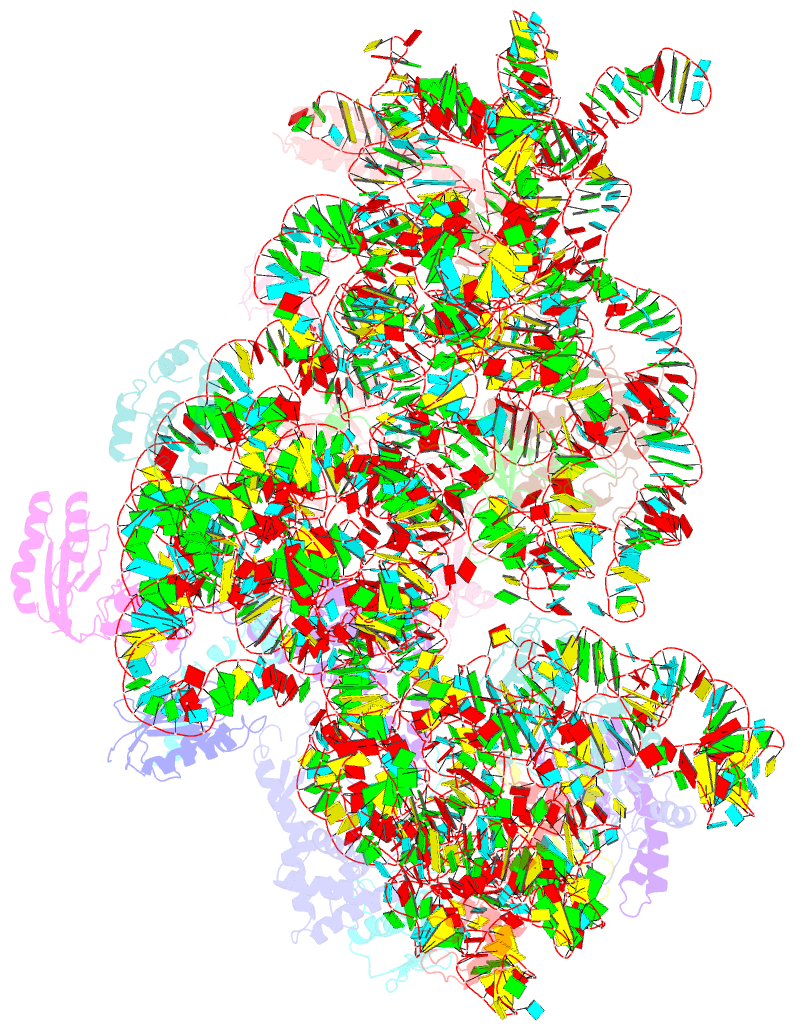Summary information and primary citation
- PDB-id
- 6spe; SNAP-derived features in text and JSON formats;
DNAproDB
- Class
- ribosome
- Method
- cryo-EM (3.6 Å)
- Summary
- Pseudomonas aeruginosa 30s ribosome from a clinical isolate
- Reference
- Halfon Y, Jimenez-Fernandez A, La Rosa R, Espinosa Portero R, Krogh Johansen H, Matzov D, Eyal Z, Bashan A, Zimmerman E, Belousoff M, Molin S, Yonath A (2019): "Structure ofPseudomonas aeruginosaribosomes from an aminoglycoside-resistant clinical isolate." Proc.Natl.Acad.Sci.USA, 116, 22275-22281. doi: 10.1073/pnas.1909831116.
- Abstract
- Resistance to antibiotics has become a major threat to modern medicine. The ribosome plays a fundamental role in cell vitality by the translation of the genetic code into proteins; hence, it is a major target for clinically useful antibiotics. We report here the cryo-electron microscopy structures of the ribosome of a pathogenic aminoglycoside (AG)-resistant Pseudomonas aeruginosa strain, as well as of a nonresistance strain isolated from a cystic fibrosis patient. The structural studies disclosed defective ribosome complex formation due to a conformational change of rRNA helix H69, an essential intersubunit bridge, and a secondary binding site of the AGs. In addition, a stable conformation of nucleotides A1486 and A1487, pointing into helix h44, is created compared to a non-AG-bound ribosome. We suggest that altering the conformations of ribosomal protein uL6 and rRNA helix H69, which interact with initiation-factor IF2, interferes with proper protein synthesis initiation.





